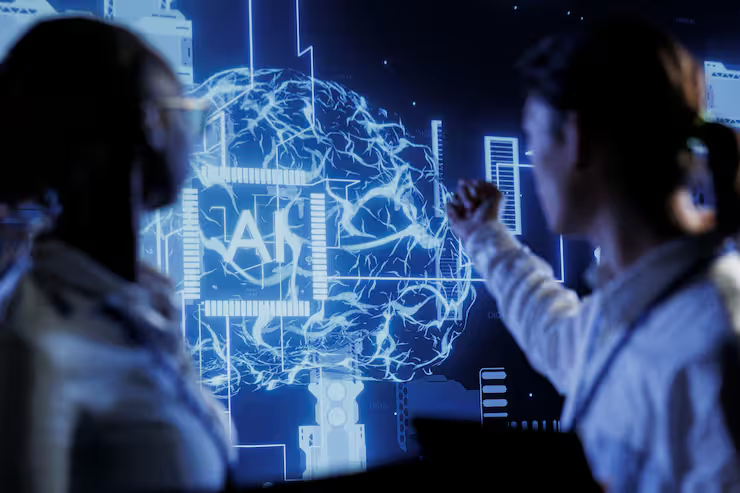AI Knowledge Hub: Explore Tips, Discover Information, and Gain Key Understanding
Artificial intelligence (AI) refers to simulation of human intelligence in machines that can learn tasks, causes and function. It is present to automate complex processes, increase the decision and process large amounts of data effectively.
AI development began with the goal of creating systems that could mimic human recognition, such as problem-solving, speech recognition and visual understanding. Over time, AI has evolved in many branches, including machine learning, natural language processing, computer vision and robotics. Its primary goal is to help people in works that require intelligence while increasing efficiency and accuracy.

Why AI means something today, who affects it, and what problems it solves
AI is quickly relevant in everyday life, business and research. Its significance derives from many factors:
-
Automation of repeated tasks: AI reduces data introduction, monitoring and regular decision-making efforts.
-
Promote decisions: Advanced algorithm can analyze the giant dataset to identify patterns and insights.
-
The application of the health care system: AI helps with diagnosis, predicting the progression of the disease and personal treatment plan.
-
Professional adaptation: AI improves operating efficiency, customer analysis and management of supply chains.
-
Global access: AI affects industries, authorities and individuals, forms education, security, transport and economic systems.
By solving problems such as data on additions, slow decision-making and disability, AI supports innovation and provides solutions in areas.
How Laws, Politics and Government Programs affect AI
AI adoption and development are influenced by the regulatory structure to ensure safety, justice and accountability:
-
Data Safety Act: The AI system shall follow the rules for the user's privacy, where data is collected, stored and processed.
-
Government Research Initiative: National programs addressed AI research to promote innovation while addressing social challenges.
-
International cooperation: The purpose of agreements and cooperation is to establish AI standards, especially in Cross-tender applications such as cyber security and autonomous systems.
-
AI in public services: Governments can distribute AI under security, health care and safety and moral standards defined in civilian services.
These policies balance innovation with risk management, which allows society to benefit society without compromising security, morality or habilitation.
AI equipment and resources for learning and apply
Students can use different devices to detect professional and enthusiastic AI:
-
AI Development Platform: Machine Learning Model, Natural Language Processing Applications and software to create computer vision system.
-
Open dataset: Publicly available dataset for training and testing AI algorithms.
-
Training and courses: Educational resources to understand algorithms, coding practices and AI applications.
-
Visualization tools: Platforms that allow AI model, predictions and visuals of the performance measurements.
-
Collaborative society: Forum and networks where developers share knowledge, solve problems and AI discusses morality.
-
Simulation and test equipment: Software to create a virtual environment to test AI in robotics, autonomous vehicles or future indicative analysis.
Using these resources helps students gain practical experiences, increase understanding and maintain the flow with AI development.
Frequently asked questions
What are the main types AI?
AI can be classified as narrow AI, which performs specific functions; General AI, who mimics human logic in the domain; And superintendent AI, which is theoretical and will overcome human intelligence.
What are the moral concerns associated with AI?
Ethical questions include AI models, privacy, transparency, job shift and probable abuse of autonomous systems.
Can AI replace human jobs?
AI automatically some repeated or data-driven features, but cannot replace human creativity, emotional intelligence and complex decisions completely. It often complements human work.
How to start learning preliminary AI?
Start gaining experience with online training programs, basic programming languages (eg Python), Open Source Machine Learning Library and Small Projects.
Conclusion
AI is a transformation technique that improves human abilities, improves efficiency and faces complex challenges in industries and societies. From automation and future analysis to creative applications, AI becomes an integral part of modern life.
Recent trends, such as generic AI, multimodal systems and moral regulation, highlight both opportunities and responsibilities related to use. Government policy, data security rules and global standards form safe and fair distribution.
Sensible equipment, with educational resources and practical experiment, can create a solid understanding of beginners, discover innovative applications and participate in shaping the future. By being informed about updates, guidelines and moral ideas, individuals can gain meaningful knowledge and implement AI in a responsible way for personal, professional and social development.
